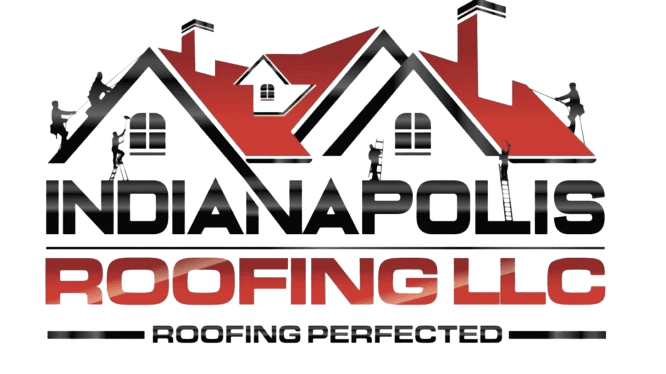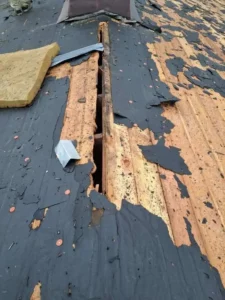In this blog post, I will share my expertise on what to look for when inspecting your roof. As a seasoned professional in the field, I have gathered valuable insights that will help you identify potential issues early on and ensure the longevity of your roof. From common problems to important warning signs, this guide will equip you with the knowledge to conduct a thorough roof inspection with confidence.
Inspect your roof for signs of damage such as missing shingles, cracks, and leaks. Ensure gutters and downspouts are securely attached and debris-free.
Regular roof inspections are essential in maintaining the longevity and integrity of your home. Over time, even the most durable roofs can suffer from wear and tear due to weather conditions and natural aging. Ignoring minor issues can lead to costly repairs or roof replacements down the line, so it’s important to stay vigilant.
Catching problems early can save homeowners a significant amount of time and money. As you examine the roof, look beyond the obvious and assess the less visible elements like flashing around vents and chimneys, which could be vulnerable to water penetration. Also, proactive inspections allow you to plan maintenance on your terms instead of reacting to unexpected failures. Remember, a sturdy roof repair is crucial for the safety and security of your dwelling.
Table of Contents
ToggleThe Importance Of Regular Roof Inspections
Your roof shields you from rain, snow, and harsh winds. To keep it strong, regular check-ups are key. Think of these like a health exam for your home. They catch small issues before they blow up into costly fixes. Plus, they keep your roof in top shape for longer. Let’s explore why these inspections can save your wallet and your roof!
Avoiding Costly Repairs Through Early Detection
Spotting trouble early can save you big money. A small leak might not seem like a big deal, but it can quickly turn into a disaster if ignored. Here’s a list of things to check:
- Missing shingles: These expose your roof to water damage.
- Cracked caulk: This can let in moisture, leading to mold.
- Rust spots: Metal parts of your roof can rust, causing weakness.
- Worn boots: These around vents and pipes can cause leaks.
Find these problems early, and you can fix them fast and cheap!
Extending The Life Of Your Roof
Regular inspections make your roof last longer. Think of it like caring for a car. You wouldn’t skip oil changes, right? Your roof needs the same attention. By keeping up with maintenance, you avoid severe damage. Here’s what a check-up involves:
- Cleaning debris: Leaves and branches can trap moisture.
- Inspecting for wear: This shows if shingles need replacing.
- Checking for algae and moss: These can eat away at roofing materials.
With these steps, your roof can protect your home for many years. Don’t wait for leaks; get inspections done regularly!
Safety First: Preparing For A Roof Inspection
Your roof is a shield that keeps you safe from the sky’s whims. Yet, checking its health can be risky. Preparing with safety in mind is key. This guide walks you through essential safety steps for a roof inspection.
Choosing The Right Safety Gear
Prioritize protection before stepping onto your roof. Equip yourself with the proper gear:
- Non-slip footwear: Ensure sturdy grip to prevent falls.
- Gloves: Protect hands from sharp edges and debris.
- Helmet: Shield your head against unexpected impacts.
- Harness: A must-have for steep or high roofs.
- Ladder: Use a reliable one, firmly grounded and at the proper angle.
Understanding The Risks Involved
Knowing the hazards is vital before climbing up:
| Risk | Description | Precaution |
| Falls | Most common accident. | Wear a harness and work with a buddy. |
| Weather | Sudden changes can increase risk. | Check the forecast and avoid windy, wet conditions. |
| Electrical Lines | Nearby wires can be hazardous. | Keep a distance and use a wooden ladder. |
| Unstable Surface | Weak roofing can collapse. | Inspect from a distance before walking on it. |
Ensuring The Safety Of Your Surroundings
Secure the area below the roof before inspection.
- Inform others of your inspection plans.
- Cordon off the area to prevent passage.
- Check for obstacles like branches or power lines.
- Keep pets and children indoors.
Diligence during inspection prevents accidents.
Professional Vs. Diy: Choosing Your Approach
Inspection of your roof is key to a happy, leak-free home. Two roads diverge here: calling in the pros or going DIY. Each choice has its merits. Knowledge is your friend as you decide which path is right for you. Let’s explore the indicators for professional assessment and the must-haves for self-inspection.
When To Call A Professional Roofer
Spotting roof trouble isn’t always straightforward. Here are clear signs you need an expert:
- Water Damage: Stains on ceilings suggest leaks above.
- Sagging Roof: A droopy roof is cause for alarm.
- Shingle Problems: Missing or cracked shingles spell trouble.
- Moss and Mold: These can point to water retention.
- Recent Natural Event: Post-storm, a pro should check for hidden damage.
Here’s a pro tip: if in doubt, always consult an expert. They possess the tools and know-how to uncover hidden issues.
Equipment Needed For A DIY Inspection
Planning to inspect yourself? Ensure you have the right equipment:
| Item | Description |
| Ladder | A stable ladder is essential for safe access. |
| Binoculars | Use these to spot issues from the ground. |
| Protective Wear | Gloves and boots will keep you safe up top. |
| Camera or Smartphone | Document any issues for further review. |
| Roofing Gauge | This measures shingle wear and thickness. |
Remember, your safety comes first. If any part of the inspection feels unsafe, it’s time to call in the professionals.
Structural Integrity: Examining The Framework
Your roof’s structural integrity is like the backbone of your home, keeping everything in place. Examining the framework is a critical step in roof inspection. Look for signs of damage or weakness that could compromise your home’s safety. This check ensures your roof can withstand the elements and prevent costly repairs in the future.
Identifying Signs Of Sagging Or Warping
Roof sagging or warping is a red flag for underlying issues. Check for bowed rafters or ridge lines from the ground or attic. See if the roof appears even and straight. Signs of bending, dipping, or curving suggest immediate attention is required.
- Observe the roof lines for uniformity and symmetry
- Look for depressions or an uneven roof plane
- Inspect the ceiling inside for any changes or cracks
Inspecting The Roof Trusses And Decking
The trusses and decking under the shingles form the roof’s foundation. Access the attic to conduct a thorough check. Seek out signs of wood damage, rot, or mold. They indicate moisture problems. Make sure metal connectors and plates are rust-free and firmly in place.
| Area | What to Inspect |
| Trusses | Integrity of wood, stability, and any signs of strain or movement |
| Decking | Smoothness, firm attachment to trusses, and absence of moisture damage |
Remember, a healthy roof structure equals a safe home. Regular inspections save you from surprises. Trust a professional if you spot serious concerns.
Surface Condition: Shingles And Tiles
Inspecting the surface condition of your roof is vital. It tells you about the health and longevity of your roof. Shingles and tiles act as the first line of defense against the elements. Examine these closely to ensure your roof remains intact and functional. Let’s delve into what specifics to check.
Spotting Cracked, Broken, Or Missing Shingles
Cracked, broken, or missing shingles can lead to leaks. This damage invites water seepage which harms your roof structure. Look for:
- Cracks running through shingles
- Gaps where shingles might have fallen off
- Breaks or bends on the shingle surface
Address these issues promptly to prevent further damage.
Assessing Wear And Tear On Tiles
Tile wear and tear reduces a roof’s life span. Inspecting tiles is crucial for spotting subtle signs of aging. Watch out for:
- Fading colors
- Chipping or flaking at the edges
- Small cracks that could lead to bigger issues
Early detection of these signs can save you from costly repairs. Regular inspections keep your roof strong and secure.
Seals And Joints: Preventing Leaks
Keeping a roof over your head means making sure it’s leak-free. The seals and joints of your roof are crucial defenses against water damage. Over time, these can wear out or break. Regular inspection of these areas can save your home from costly water damage. Let’s dive into what you should check to safeguard your home.
Checking Flashings And Sealants
- Examine the flashings. These are metal pieces that cover the curves and corners of your roof.
- Check for rust, cracks, or holes. These signs mean water can get in.
- Ensure the sealant isn’t broken or missing. It should seal the flashing edges tightly.
Flashings around skylights, valleys, and eaves need extra attention. Weak spots here often lead to leaks.
Ensuring Tight Seals Around Vents And Chimneys
These areas have their sealing challenges. Here’s what to focus on:
- Check the rubber boots around the vent pipes. They should not have cracks.
- Inspect the mortar on the chimneys for deterioration.
- Ensure no gaps or spaces are present around fixtures.
Vents and chimneys penetrate your roof, creating potential leak sites. Tight seals keep water out.
Gutters And Drainage: Sustaining Water Flow
Roof inspections aren’t complete without checking gutters and drainage systems. Get this right, and your home stays dry and safe. Neglect it, and water could spell disaster for your property. Let’s ensure those gutters and drains are doing their job right.
Clearing Obstructions And Debris
Your roof’s best friend is a clear gutter. Sticks, leaves, and even critters can block water flow. Here’s what to remove to keep things moving:
- Natural debris like leaves and twigs
- Trash or any plastic items caught in the gutters
- Nests or evidence of animal or insect blockages
Regular cleaning prevents overflows and water damage. Maintain them seasonally and after storms for the best results.
Inspecting For Proper Alignment And Damage
Gutters must angle right to guide water away. Misaligned gutters can cause pools on your roof. This hurts your home.
- Check for sagging sections or separations between gutters and roofline.
- Look for cracks, holes, or signs of rust.
- Ensure downspouts are intact and divert water well away from the foundation.
All components need a tight, secure fit. Any damage you spot should be fixed quickly to avoid costly issues.
Moisture And Mold: Tackling Hidden Dangers
Your home’s safety starts with a solid roof. Moisture and mold pose serious risks to that security. They hide beneath the surface, gradually undermining the integrity of your roof. Regular inspections are crucial. They unveil these hazards before they escalate into costly repairs. This guide illuminates how to spot and address moisture and mold in your roofing system.
Identifying Signs Of Water Damage
Water damage alters your roof’s appearance and structure. Look for these indicators:
- Dark streaks or spots
- Sagging or swollen decking
- Peeling paint under roof overhangs
A thorough check inside your attic is critical. Search for water stains or a musty smell. Using a flashlight will help in spotting any reflective moisture signs.
Checking For Growth Of Mold And Fungi
Mold and fungi spell trouble for a roof. Signs of growth include:
- Unexplained musty odors
- Visible mold patches
- Allergic reactions from household members
Ventilation plays a pivotal role. Ensure your attic is well-ventilated. This reduces dampness that fosters mold growth.
Insulation And Ventilation: Balancing Temperatures
Keeping a roof over your head involves more than just shingles and gutters. A well-maintained roof regulates your home’s climate through effective insulation and ventilation. This balanced approach prevents energy loss and wards off potential damage caused by moisture and temperature extremes. Let’s delve into the essentials of a properly insulated and ventilated roofing system.
Assessing The Effectiveness Of Insulation
Proper insulation plays a pivotal role in maintaining a consistent indoor temperature. Assess insulation thickness and material to ensure it meets regional energy codes. A simple visual check can reveal gaps or deterioration. Additionally, a professional energy audit pinpoints insulation weaknesses, providing a clear path to improvements.
- Check the attic floor for uniform insulation coverage.
- Look for dark spots in the insulation, that indicate air leaks.
- Examine for any water stains or wet insulation.
Pay special attention to areas where leakage is common, such as around vents and chimneys. Taking these steps helps you gauge your insulation’s performance. Remember, effective insulation contributes to reduced energy bills and enhanced comfort.
Ensuring Adequate Roof Ventilation
A well-ventilated roof maintains airflow, reducing heat and moisture buildup. This airflow prevents damage from conditions like ice dams and wood rot. Evaluate roof vents for blockages and consider their placement. Ventilation should be evenly distributed between the soffits (intake) and the roof peak (exhaust).
| Ventilation Feature | Function | Checklist |
| Soffit Vents | Intake air | Clear of debris, unobstructed |
| Ridge Vents | Exhaust air | Properly sealed, no cracks |
| Gable Vents | Supplement airflow | Screen intact, no blockages |
Consider the installation of additional vents if necessary. Proper ventilation extends the life of your roof and reduces energy consumption. It’s crucial for a healthy, high-functioning roof system.
To ensure your roof remains a stronghold against the elements, a vigilant approach toward insulation and ventilation is essential. A regular check-up supports a robust roof structure, optimizes temperature balance, and fosters a comfortable living environment.
Roof Features: Skylights, Solar Panels, And More
Your home’s roof is more than just shingles and insulation; it can host a variety of advanced features like skylights and solar panels, each adding value and functionality. Smart maintenance is key to ensuring that these roof features continue to enhance your living experience without causing unexpected issues.
Inspecting and maintaining these installations are critical for a sturdy, leak-free roof. Whether you enjoy natural light from a skylight or harness solar energy, regular checks are a must.
Inspecting Additional Roof Installations
Periodic inspection helps avoid costly repairs. Look for these signs:
- Cracks or breakage: Check for damage that can let water seep through.
- Discoloration: Yellowing or fogging indicates possible issues with skylights.
- Loose fittings: Ensure all components are secured properly.
Maintaining Proper Seals And Functionality
Maintain seals and operations of your roof features with these steps:
- Clean regularly: Remove debris and dirt to prevent damage.
- Check seals: Look for gaps or deterioration in sealing materials.
- Operate with care: Handle moving parts gently to extend life.
| Feature | What to Look For | Maintenance Tips |
| Skylights | Cracks, discoloration, leaks | Clean glass, check seals |
| Solar Panels | Loose fittings, surface damage | Clear debris, secure connections |
Tips For Documenting Your Findings
Keeping track of your roof’s condition is crucial. A smart documentation process saves you time and money. Here’s how:
Creating A Checklist For Consistent Inspections
Start with a checklist. It ensures you don’t miss any spots during your inspection. Follow these points:
- Inspect shingles: Look for cracks, warps, or missing pieces.
- Check flashing: Ensure the seals are tight around chimneys or vents.
- Gutter health: Gutters should be clear of debris.
- Interior inspection: Don’t forget to check from inside the attic for leaks or light intrusions.
- Structural integrity: Make sure there are no sags in the roof.
Using Photographs For Future Reference
Capture photos of your roof. They come in handy for comparing changes over time. Keep these tips in mind:
- Consistent angles: Shoot from the same spots each time for accurate comparisons.
- Close-ups and wide shots: Take both to get the full picture.
- Detailed labeling: Date and describe each photo clearly.
- Organized storage: Keep digital or physical copies in a dedicated place.
Documenting is key. Checks twice a year are best. A trustworthy roof means a safe home.
Seasonal Concerns: Adapting To Weather Changes
Your roof bears the brunt of weather changes year-round. Understanding specific seasonal demands ensures a long-lived, resilient roof. Spring showers, summer rays, fall leaves, and winter weights can each play havoc in their way. Let’s explore how to adapt to these shifts, focusing on two of the most extreme seasons: winter and summer.
Special Considerations For Winter
Winter brings cold, ice, and snow, which all pose unique challenges to your roof’s integrity.
- Inspect for Ice Dams: Formed when heat escapes and melts rooftop snow, they prevent proper drainage.
- Check Insulation: Well-insulated attics stop heat from causing snow to melt and refreeze on your roof.
- Clean Gutters: Ensure that gutters are debris-free to prevent water backups that can freeze and cause structural damage.
- Scan for Snow Accumulation: Heavy snow can exceed the weight your roof was designed to support.
Special Considerations For Summer
In contrast, summer subjects your roof to intense heat and UV rays, which can deteriorate materials over time.
- Check for Ventilation: Proper attic ventilation prevents heat buildup that can warp roofing materials.
- Inspect Shingles: Look for signs of curling or blistering that indicate overheating or aging.
- Clean Gutters: Clear gutters aid in handling summer storms and prevent water damage.
- Trim Trees: Remove overhanging branches that can scratch or gouge roofing materials during storms.
Preparing Your Roof For Extreme Weather
To safeguard against the ravages of climate, preparation is critical.
- Conduct Regular Inspections: Spot potential problems before they escalate.
- Maintain Roofing Elements: Fix or replace damaged or worn parts promptly.
- Seek Professional Advice: A licensed roofer can provide tailored strategies for extreme weather readiness.
- Apply Preventative Treatments: Sealants and coatings can bolster your roof’s defenses.
After Inspection: Next Steps
The ‘After Inspection: Next Steps’ phase is crucial for maintaining a healthy roof. Once the inspection is complete, it’s time to map out what comes next. This might include sorting out minor repairs or deciding on a full roof replacement. Understanding how to prioritize and when to invest is key to a long-lasting roof.
Prioritizing Repairs And Maintenance
A thorough roof inspection often reveals a mix of issues, some more urgent than others. To keep your roof in top shape, list out all identified problems and tackle them with urgency:
- Leaks: Address first, as water damage worsens over time.
- Missing Shingles: Replace quickly to avoid exposed areas.
- Wear and Tear: Plan repairs for damaged flashings and sealants.
- Gutter Cleanliness: Ensure gutters are clear to prevent water buildup.
Regular maintenance like cleaning and minor repairs can greatly extend the life of your roof.
Understanding When To Invest In A New Roof
Knowing when to invest in a new roof can save both time and money. Consider these factors:
| Age of Roof | Condition | Cost of Repairs vs. Replacement |
| If over 20 years old, | Severe damage or wear, | If repairs cost more than half a new roof, |
| It might be wiser to invest in a new roof instead of patching the old one. | ||
Choosing a new roof involves both materials and labor costs. Seek professional guidance to make the best investment. Ensure longevity and quality when selecting new roofing materials.
Maintaining A Healthy Roof: Long-term Strategies
A strong roof is crucial for a secure home. Think of it as a helmet for your house. Just like a helmet, a roof needs good care to work well. This section focuses on smart ways to keep your roof in top shape over the years.
Implementing Regular Maintenance Routines
Regular check-ups are key for a healthy roof. It’s like going to the dentist but for your house. Spot small issues before they grow. Here’s how:
- Inspect twice a year: once in spring and again in fall.
- Look for loose shingles: high winds can damage them.
- Clear out gutters: leaves and debris cause water damage.
- Trim overhanging branches: they can scratch and harm your roof.
Tackle repairs right away. A small fix today can save a big bill tomorrow.
Choosing The Right Materials For Longevity
The right material can mean a longer-lasting roof. Think of it as choosing the best armor. It needs to withstand rain, sun, and wind. Consider these options for durability:
| Material | Lifespan | Benefits |
| Asphalt Shingles | 15-30 years | Economical, many color options |
| Metal Roofing | 40-70 years | Durable, fire-resistant |
| Clay Tiles | 50+ years | Stylish, good in warm weather |
Choose what fits your home’s style and your weather. Your local roof expert can guide you to the best choice.
Frequently Asked Questions Of What To Look For When Inspecting Your Roof
How Do You Inspect A Roof Yourself?
To inspect your roof yourself, first ensure your safety with proper gear. Examine shingles for damage, check for leaks in the attic, inspect gutters for blockages, and assess the condition of flashing. Regularly trim nearby tree branches.
How Do I Know If My Roof Is OK?
Inspect your roof regularly for signs of damage, such as missing shingles, leaks, or clogged gutters. Annual professional evaluations ensure your roof remains in good condition.
How Do You Check Roof Integrity?
To check roof integrity, inspect shingles for damage, look for leaks in the attic, check for sagging, examine the roof flashing, and ensure drainage systems are clear.
What Should A New Roof Look Like?
A new roof should appear even and uniform, have clean lines, display proper flashing, and feature securely fastened, flat-lying shingles or other materials without gaps or buckles.
Conclusion
Ensuring the longevity of your roof demands vigilance and informed inspections. Spotting early signs of wear can save you from costly repairs. Regular check-ups, professional assessments, and timely maintenance are your best defense against the elements. Remember, a safe home starts at the top. Protect your investment with prudent roof care and attention.







